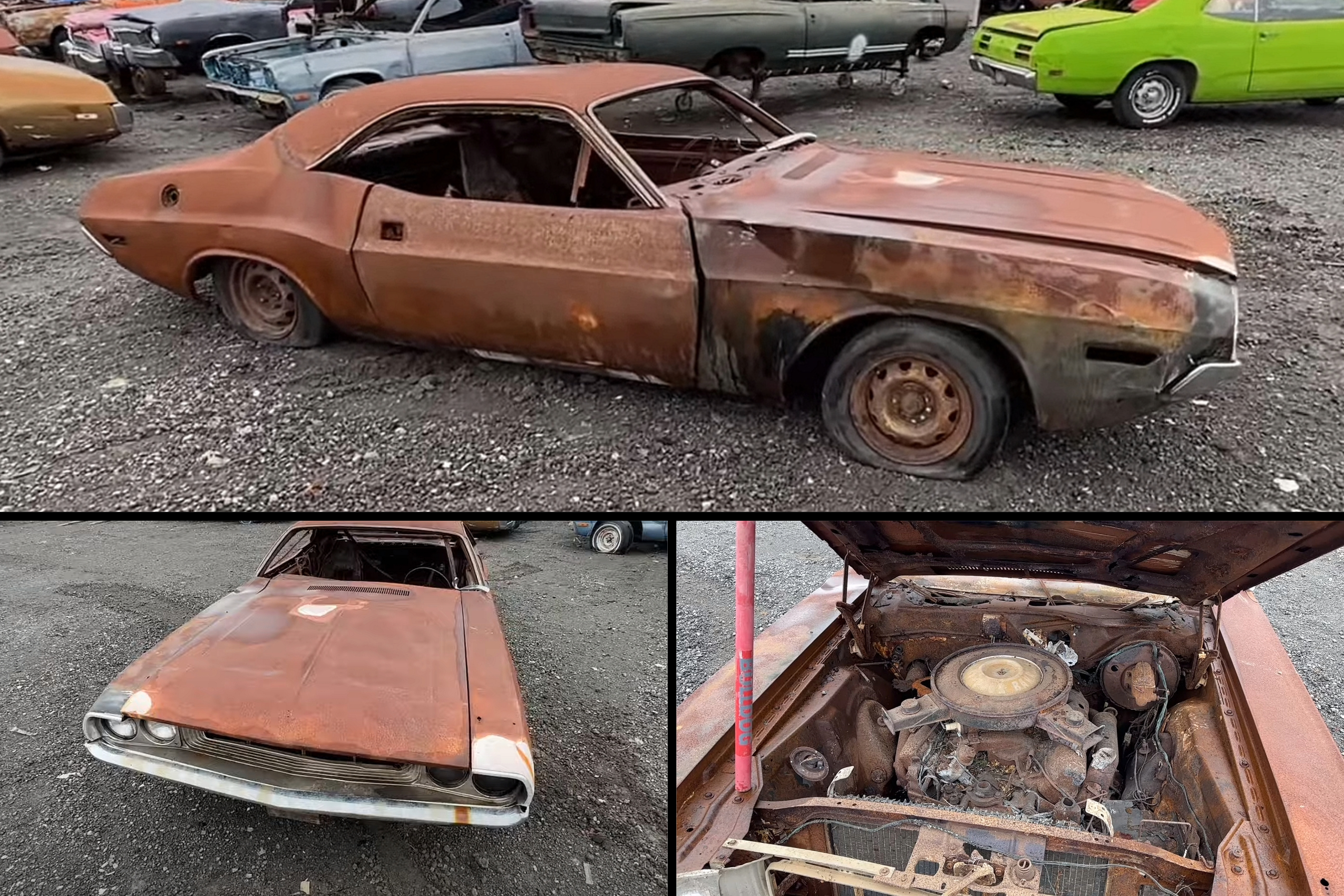When it comes to derelict muscle cars from the golden era, I agree that we should do our best to save all of them. They’re just too cool to ignore, regardless of the drivetrain setup. But some vehicles are too far gone and, sadly enough, end up in the crusher.

How do we know when a classic is too far gone? Well, this discussion usually revolves around how much cash one needs to spend on a restoration. If the amount is close to or higher than the vehicle’s market value in Concours condition, it’s not worth it. Unless it’s a classic with some sort of sentimental value, of course.

Body and frame rot is usually the main enemy, but the 1970 Dodge Challenger you see here doesn’t have an inch of rust. This once glorious Mopar was rendered unsalvageable by fire. The car burned to a crisp during the Paradise, California wildfire, and even though it may still look solid at first glance, it’s one of those classics that shouldn’t be saved.

Now residing at the Shade Tree Vintage Auto salvage yard, the Challenger is pretty much a brown shell. The white paint is gone, and the interior is nothing more than a pile of metal debris that didn’t melt during the fire. The engine is still under the hood and looks decent, given the hot ordeal this car went through.

But why isn’t this Mopar suitable for a complete restoration? Well, as our host points out, even though it may look like a solid project car, the steel shell has no integrity left due to the high temperatures it was exposed to. The body panels would simply deform as the vehicle hits bumps that are common on most roads.

Or, as a formed body man points out in the video’s comments section, the body panels are “weakened so badly that a squirrel running past it sneezing in its direction would almost dent it.” The guy is obviously exaggerating to make a point, but this Challenger shouldn’t return on public roads. Unless it gets a brand-new body and frame, which would turn it into an entirely different car.

Granted, the Challenger is nothing more than a reminder that Mother Nature is a force to be reckoned with. But here comes the saddest part: it’s also the perfect proof that some classic cars can’t be saved.

